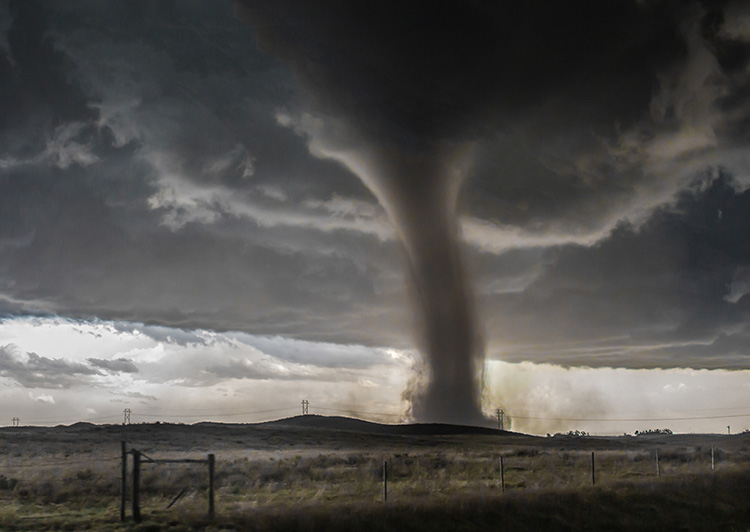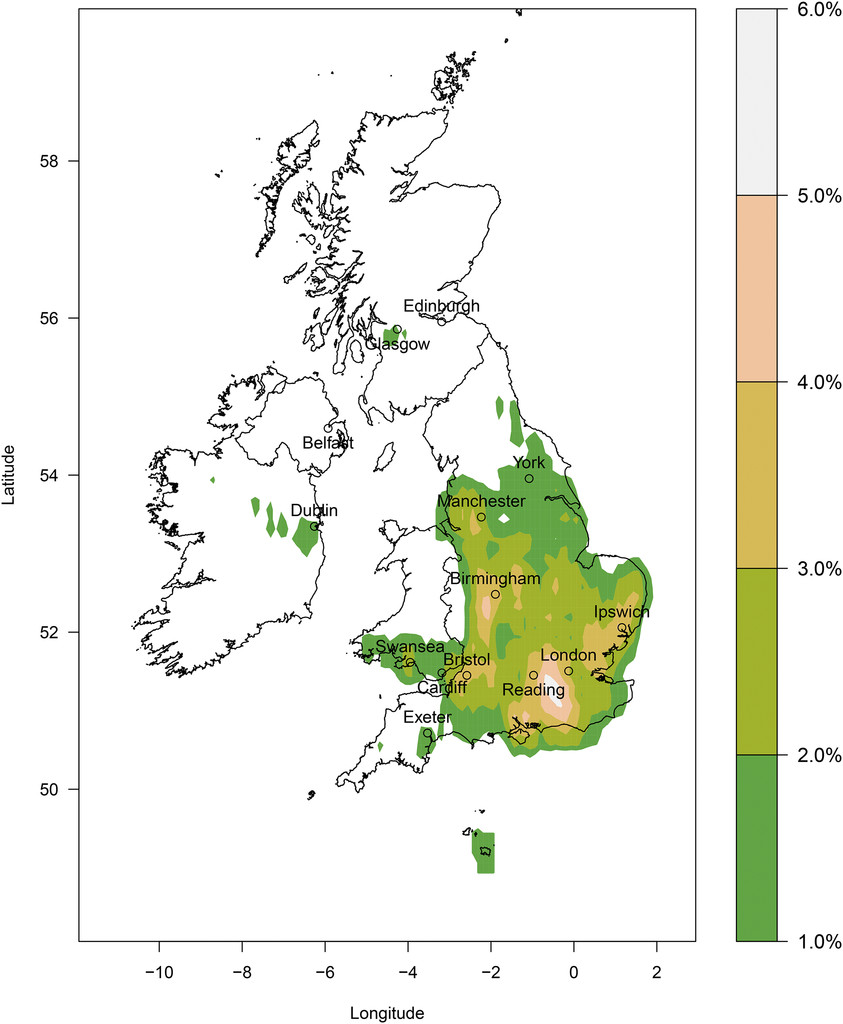
Tornadoes are a surprisingly common occurrence in the UK, and are most likely to form in three ‘tornado hotspots’
By
As strong winds battered the UK this week, reports emerged that a tornado travelled through the village of Knutton in Staffordshire, causing damage to roofs and fences, and even upturning a caravan. Although the reports are yet to be verified, the Met Office has confirmed that the wind conditions did have the potential to form a tornado. In fact, while tornadoes are better known for occurring in countries such as the USA, Canada and Bangladesh, scientists say they are surprisingly common in the UK.
On average, around 30 tornadoes are reported in the UK every year according to the Met Office. On 23 November 1981, a total of 104 tornado reports – at least 90 of which are believed to have been accurate – were made between Anglesey and Norwich, the largest tornado outbreak to ever happen in the UK. Between 1980 and 2012, England experienced more tornadoes per square kilometre than anywhere else on the world – 2.2 tornadoes per year per 4,545 square kilometres. In comparison, the entire USA experienced 1.3 tornadoes per year per same land area.
Unlike American tornadoes, however, most tornadoes in the UK are fairly weak. Around 95 per cent are classified as F0 or F1 on the International Tornado Intensity Scale (or ‘T Scale’), with estimated wind speeds of up to 72 miles per hour. At the other end of the scale, an F10-11 tornado (or ‘super’ tornado) may have wind speeds of up to 299 miles per hour. The strongest wind speeds ever measured during a tornado, which hit Oklahoma on 3 May 1999, reached 302 miles per hour.
Occasionally, stronger tornadoes occur in the UK, too. In July 2005, a T6 tornado struck Birmingham, causing £40 million in damages and injuring 39 people along its 11-kilometre path. In 1913, a T7 tornado travelled an estimated 17 kilometres across South Wales, resulting in five fatalities and thought to be the deadliest tornado to have ever occurred in the UK.
Underestimating the biggest tornadoes
Measuring the intensity of a tornado involves some guess work. Most violent tornadoes don’t pass weather instruments and, if they do, there’s a good chance that any recording equipment will be destroyed. Instead, wind speeds are usually estimated using the Enhanced Fujita Scale (the most common measure of tornado intensity in the US), which classifies a tornado based on the damage it causes. Even in cases where direct measurements are taken, they are usually obtained by mobile Doppler radars located well above ground level.
As a result, researchers at the University of Illinois Urbana-Champaign now believe many tornados might be much stronger than we once thought. Looking at rare, low-level mobile radar observations of 73 different tornadoes, meteorologists Karen Kosiba and Joshua Wurman found that the strongest winds generally occur very near the ground, at the base of the tornado. Their data shows that tornadoes spin as much as 30 per cent faster at 15 metres than radar measurements taken higher up had indicated, suggesting that we’re underestimating the intensity of the world’s biggest tornadoes.

The UK’s tornado hotspots
In the US, the majority of tornadoes occur in an area known as ‘Tornado Alley’ – a corridor of land stretching across the US Great Plains. Researchers at University of Manchester have suggested that the UK has its own ‘tornado alleys’, too. Looking at tornado reports between 1980-2012, they identified three regions of the UK where tornadoes are most likely to occur:
- In an area surrounding Guildford, between London and Reading (six per cent chance per year of a tornado occurring),
- In an area stretching from north of Bristol to Birmingham and Manchester (five per cent chance),
- In an area covering large parts of Essex and Suffolk (four per cent chance).
The researchers also noted that there were no tornadoes reported at all in large parts of Wales, Scotland, Ireland and Northern Ireland between 1980–2012 (the study only included land-based tornadoes – not waterspouts – as they pose more of a threat to life and property).

It’s still unclear why tornadoes are so common across the UK. ‘It seems that most tornadoes in the UK are created along long, narrow storms that form along cold fronts,’ says Kelsey Mulder, who led the study. That could be one reason why tornadoes in the UK are much weaker than those in the US, which are created by isolated storms. ‘But the process for how tornadoes form along cold fronts is not yet very well understood,’ says Mulder. More research in this area is needed to better understanding why tornadoes occur so often in the UK.




